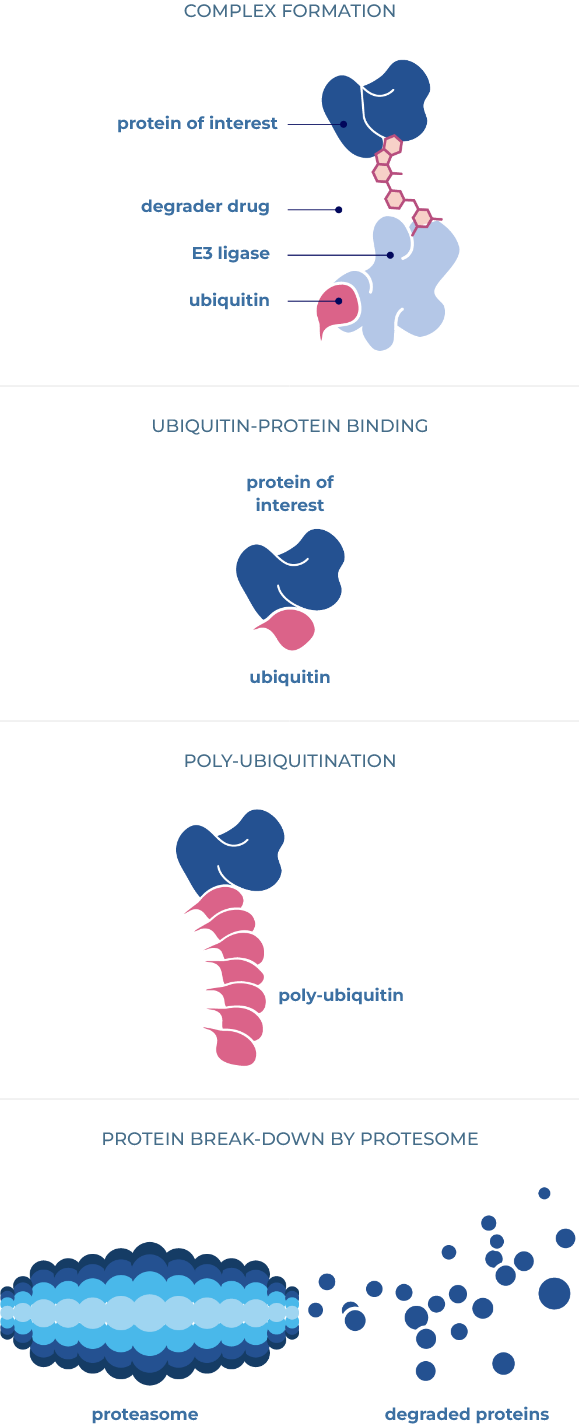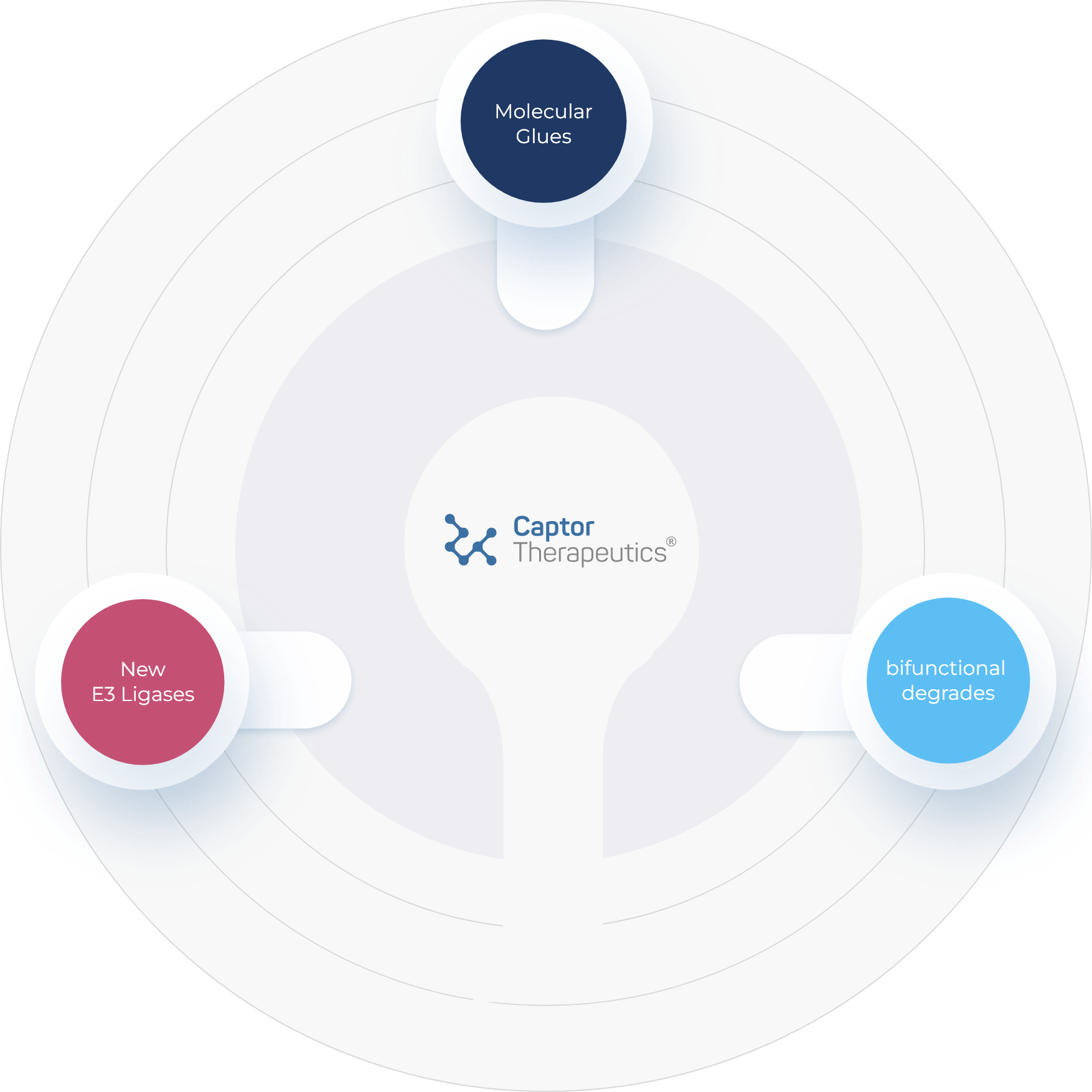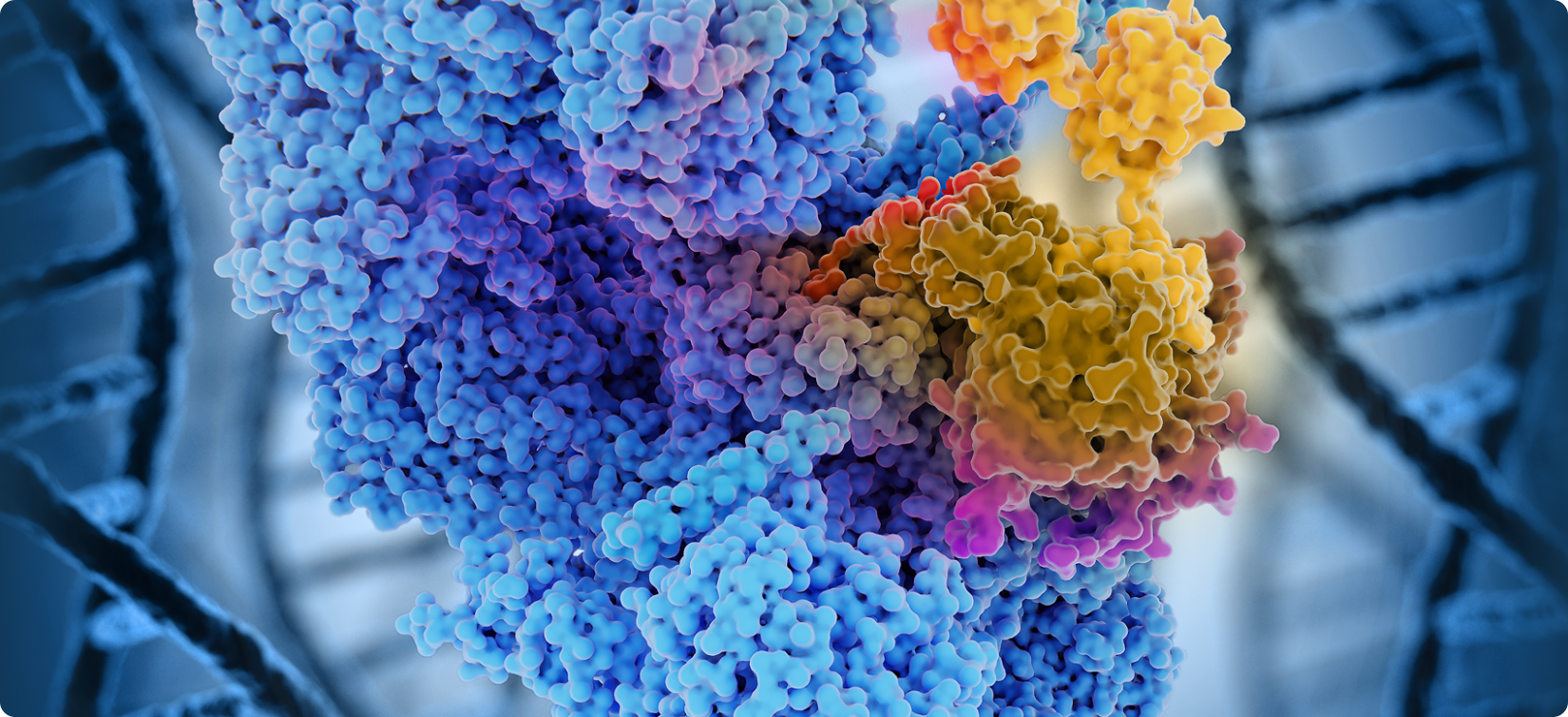
Captor Therapeutics ®
Science
Targeted protein degradation (TPD) involves the attachment of ubiquitin molecules to the target protein, marking it for degradation in the proteasome, the cell's waste disposal system.
Ubiquitin serves as a molecular tag in this process. Ubiquitin attachment is facilitated by a cascade of enzymes known as ubiquitin ligases.
TPD encompasses two main strategies: bifunctional degraders and molecular glues. Bifunctional degraders simultaneously bind to the target protein and ubiquitin ligase, promoting their proximity and leading to ubiquitination and subsequent degradation of the target protein. Molecular glues, on the other hand, bind exclusively to the ubiquitin ligase, altering its surface and facilitating novel interactions that result in ubiquitination and degradation of previously untargeted substrates.
By leveraging the principles of TPD and employing both bifunctional degraders and molecular glues, Captor Therapeutics aims to expand the therapeutic possibilities of small molecules. This approach holds the potential to overcome drug resistance and enable the targeting of previously challenging proteins, thereby opening up new avenues for the development of innovative treatments across a wide range of diseases.

Benefits
 Potential to overcome resistance to traditional drugs
Potential to overcome resistance to traditional drugs
 Opportunity for oral delivery
Opportunity for oral delivery
 Potential in currently untreated diseases
Potential in currently untreated diseases
Captor Therapeutics' proprietary Optigradeᵀᴹ platform is a robust drug discovery engine.
It is designed to produce novel drug candidates with good druggable properties against high value targets, leveraging a number of targeted protein degradation (TPD) discoveries made over the previous decades.
Captor's TPD approach focuses on three key elements: bifunctional degraders, molecular glues and E3 ubiquitin ligases, specifically new ligases which Captor believes could be better at degrading certain proteins than current E3 ligases. Captor has developed an extensive library of degraders, glues, and established a protein engineering and structure production platform that has successfully produced a range of novel E3 ligases.
Platform differentation
- Lead compounds both in molecular glues and bifunctional degraders
- Structure based hit finding and lead optimization
- Novel and proprietary chemistry
- Highly potent ADC potential

Evolving LiLis™ Platform
New generation degraders exploiting novel E3 ligases- Library of E3 Ligase proteins and ligands
- Potential improved safety
- Reduced opportunity for resistance
- Tissue specific expression
Molecular Glues
Small molecules with good drug properties that stabilize the interaction between the E3 Ligase and the target- Rational screening paradigm for new targets
- Library of proprietary CRBN based molecular glues
- Selective degradation and novel efficacy profiles
Bifunctional Degrades
A modular approach to degrader discovery- Many CRBN-based degraders co-degrade Ikaros and Aiolos with side effect consequences
- Captor's CRBN ligands have improved selectivity profile
- Includes degraders against previously undrugged targets


.png)
.png)